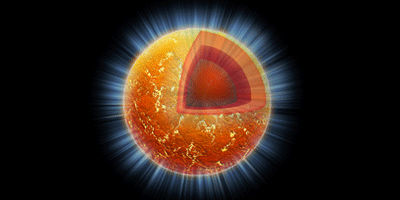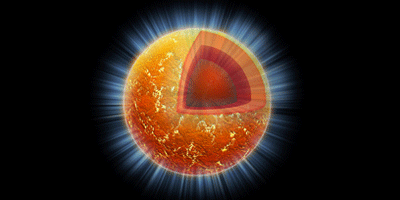Weighing Models of Neutron Stars
Nuclear fusion reactions in stars produce many elements found on Earth, but only those with atomic numbers up to that of iron. Heavier elements may have been created during previous supernova explosions of massive stars, or they may have been somehow ripped from the outer crust of superdense neutron stars that those explosions left behind.
If neutron stars indeed provide the heavy elements, their abundance should reflect the composition of the kilometer-thick crust, which varies rapidly with depth because increasing neutron density favors heavier nuclei. Now, in Physical Review Letters, researchers report precision measurements of the mass of short-lived zinc isotopes, which modify the predicted crust composition. The international team of scientists running the ISOLTRAP experiment at CERN’s radioactive ion-beam facility, ISOLDE, measured the mass of zinc-82 (Zn-82), a neutron-rich isotope that existing models predict is prevalent in the crust of neutron stars. The researchers exploited a new technique to rapidly separate the few desired zinc ions created in a pulse from thousands of others with almost the same mass. They then measured the Zn-82 mass relative to a reference with an accuracy of parts per billion. All of this must be done very quickly, because Zn-82 decays with a half-life of only a quarter of a second.
The new mass measurement supports a revised model of neutron-star crusts in which the zinc-82 is in fact no longer present, but is instead replaced by nickel-78. The revised model also fits nicely with the recent discovery of a particular neutron star that is heavier than would be possible using earlier models. – Don Monroe





